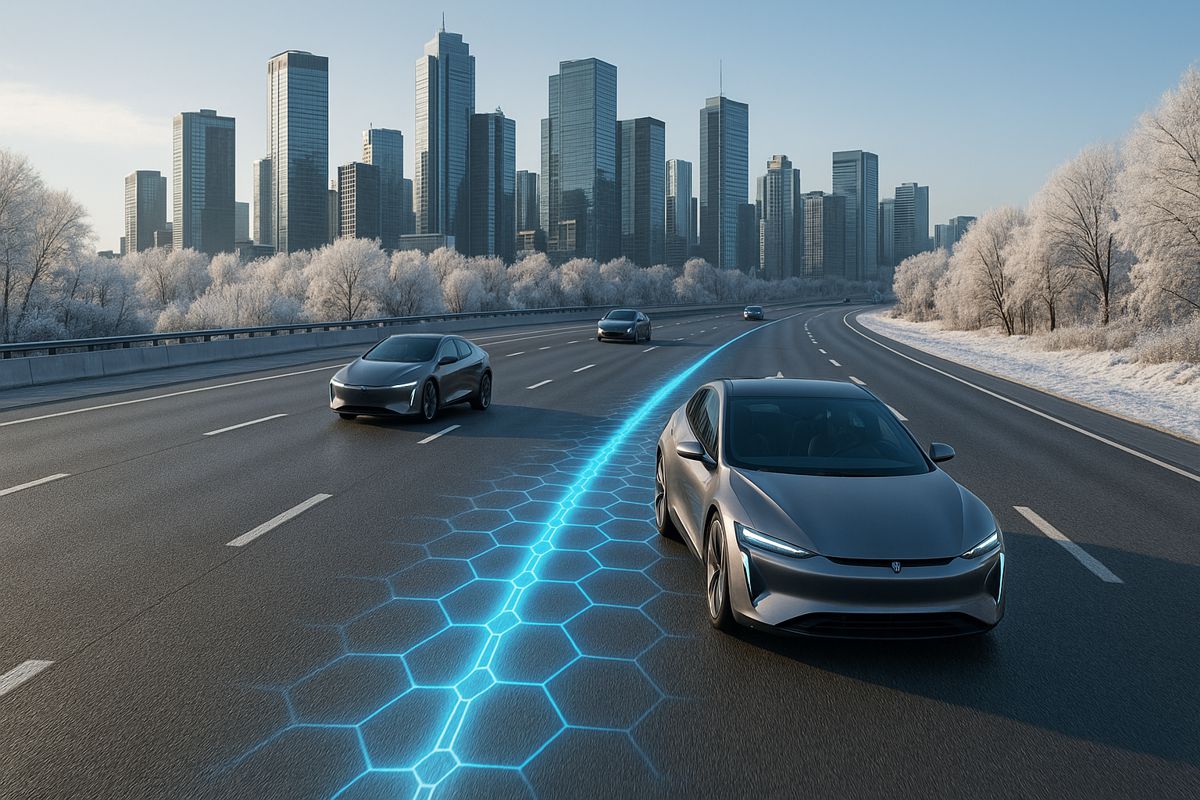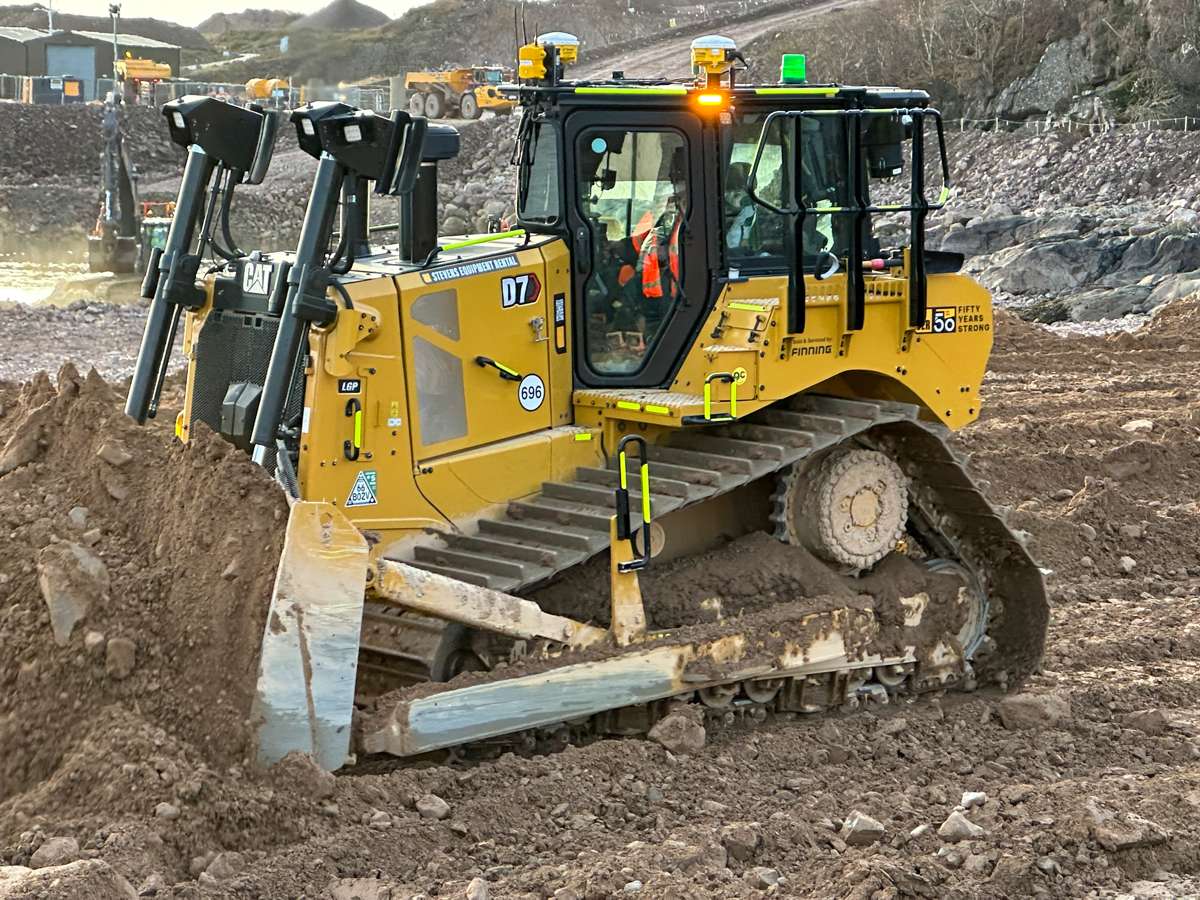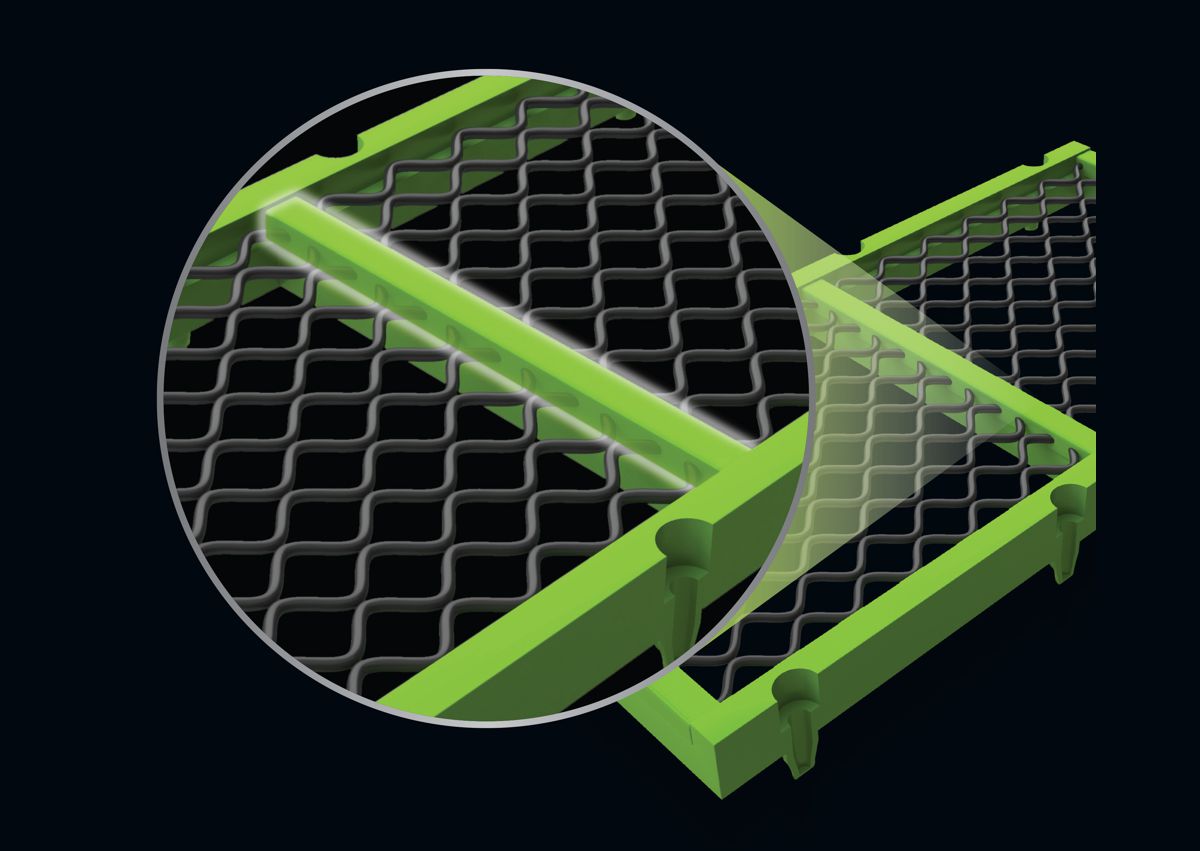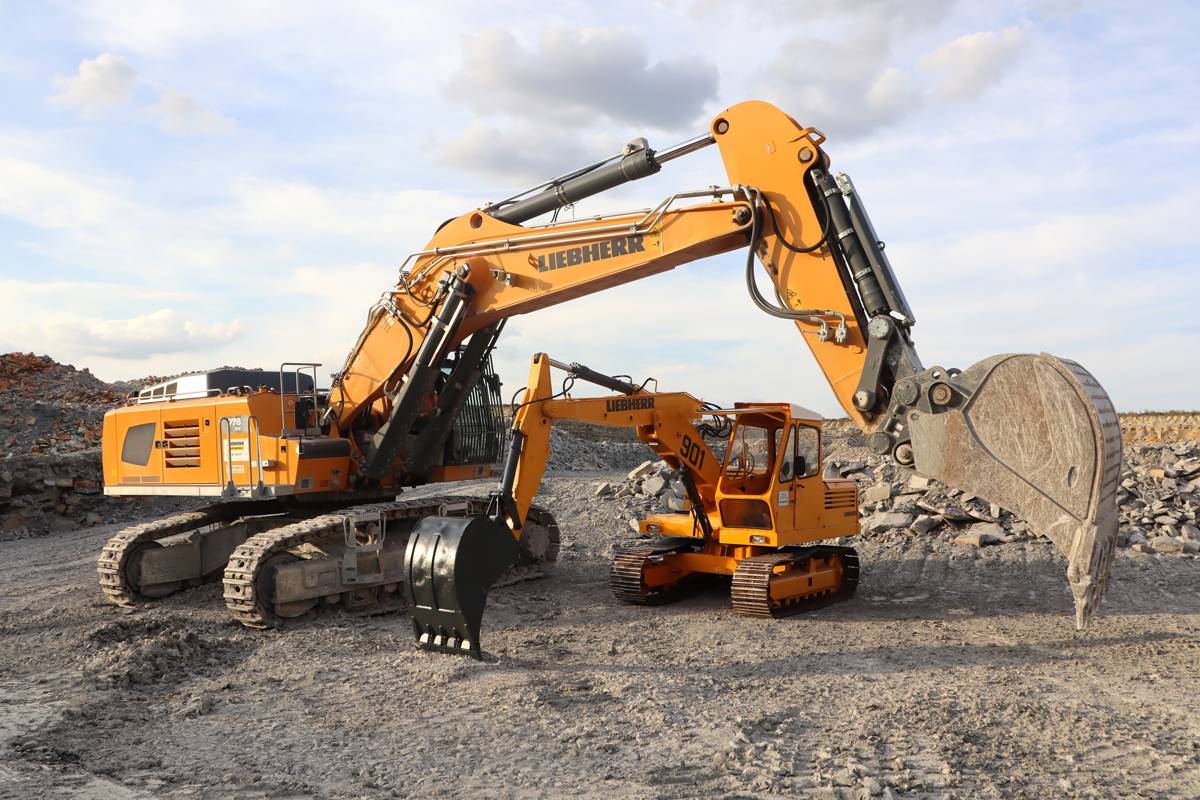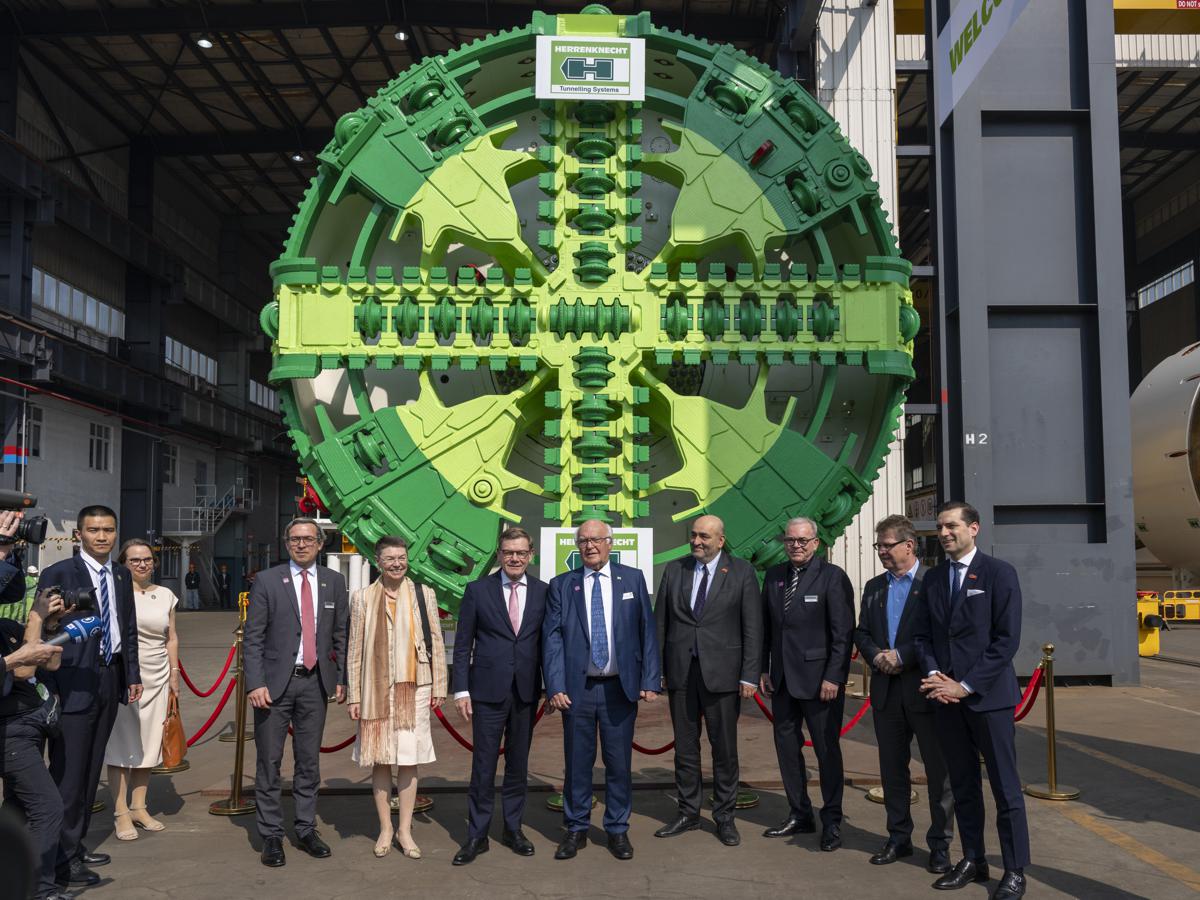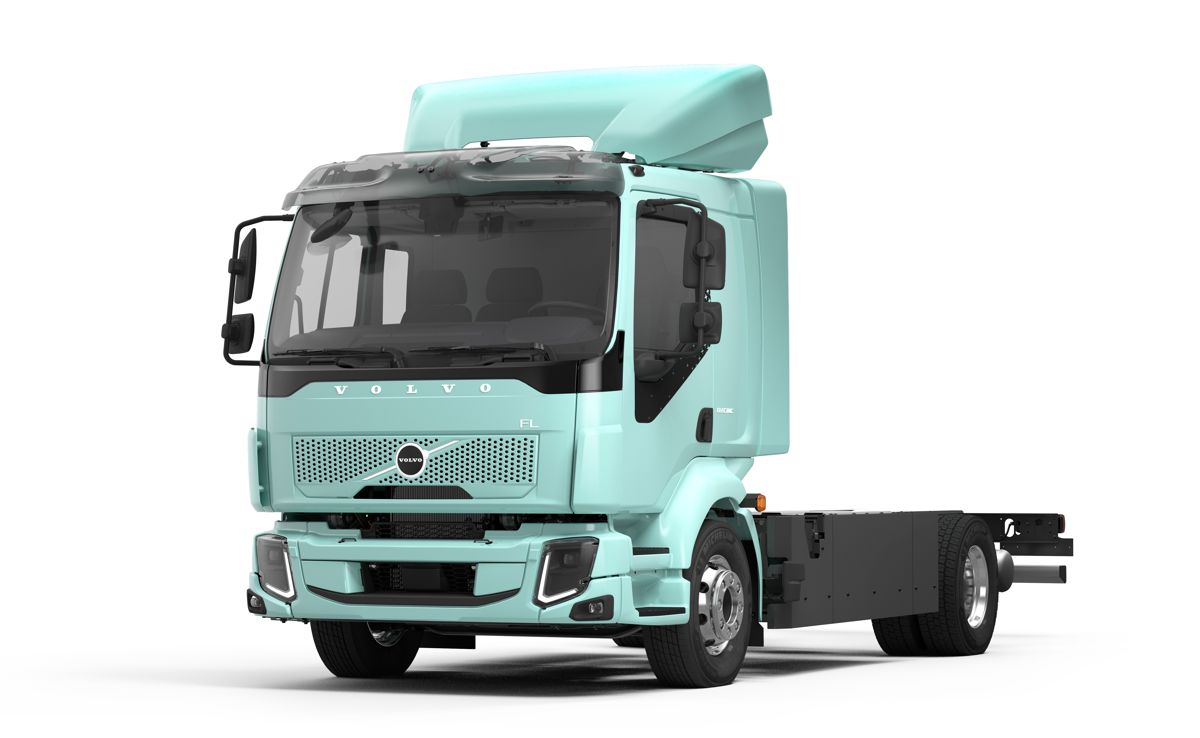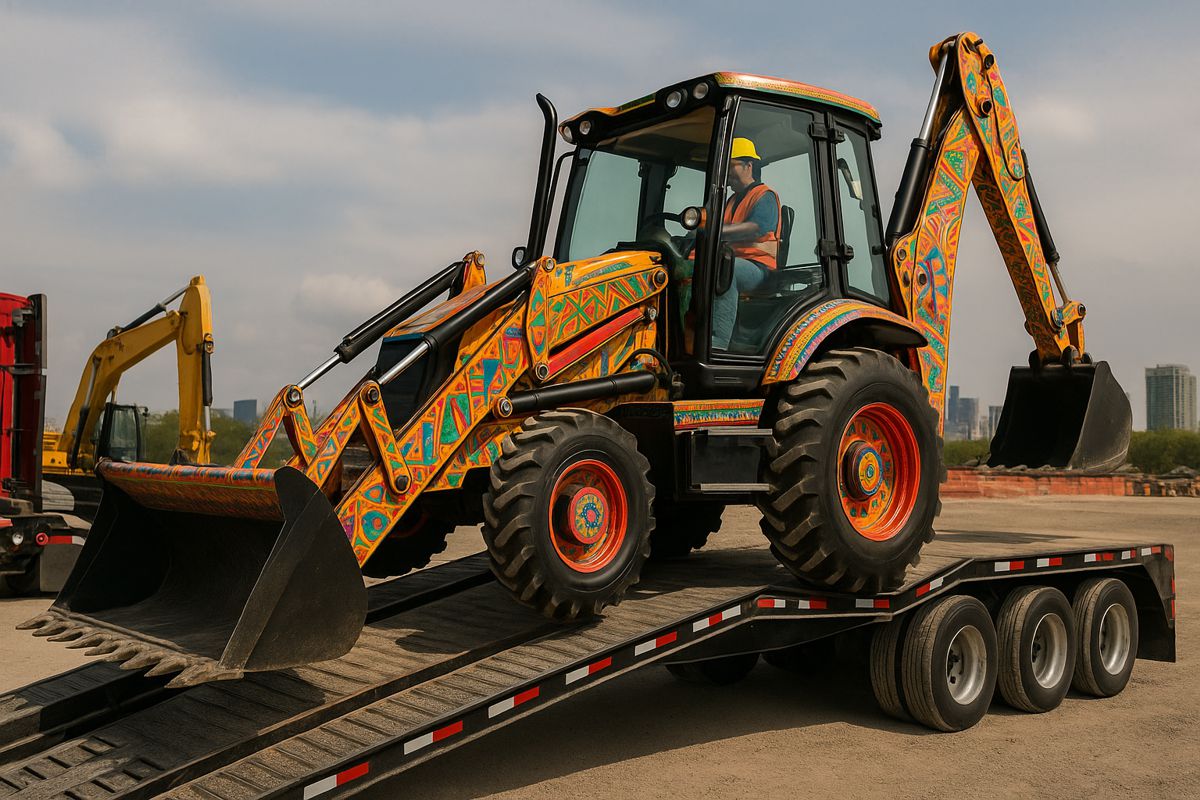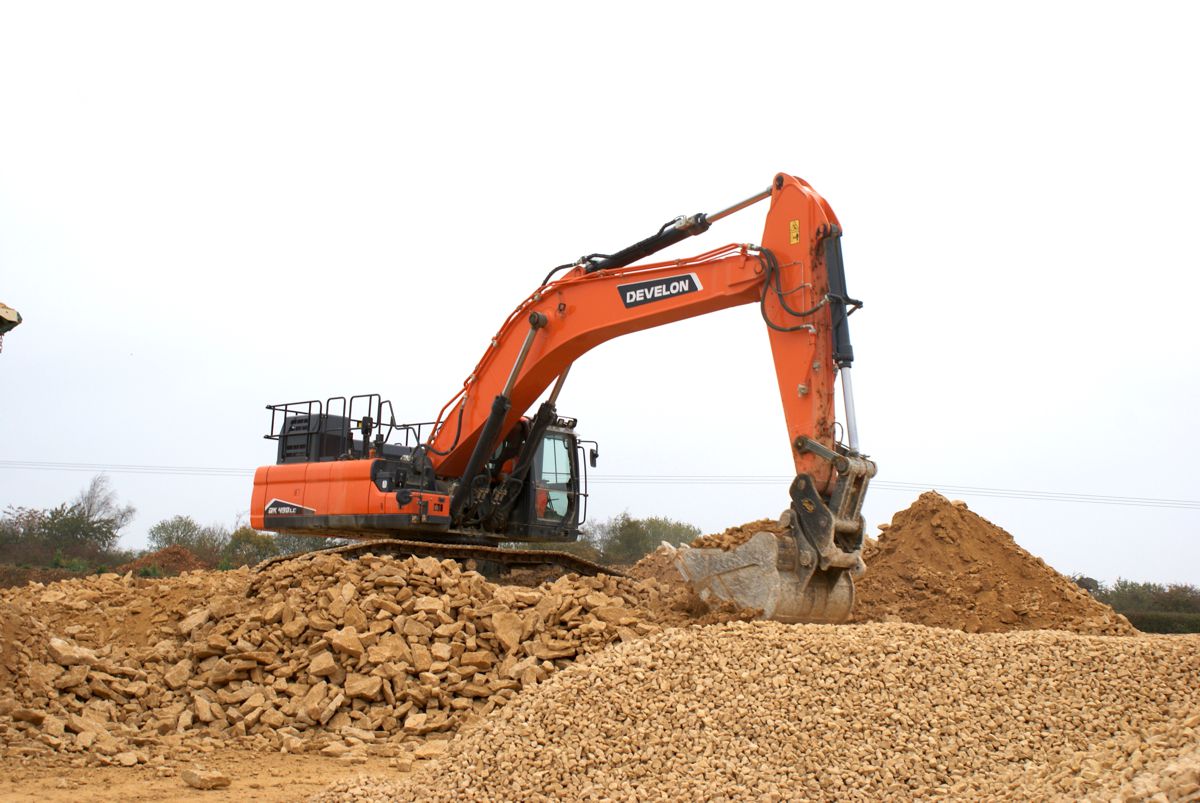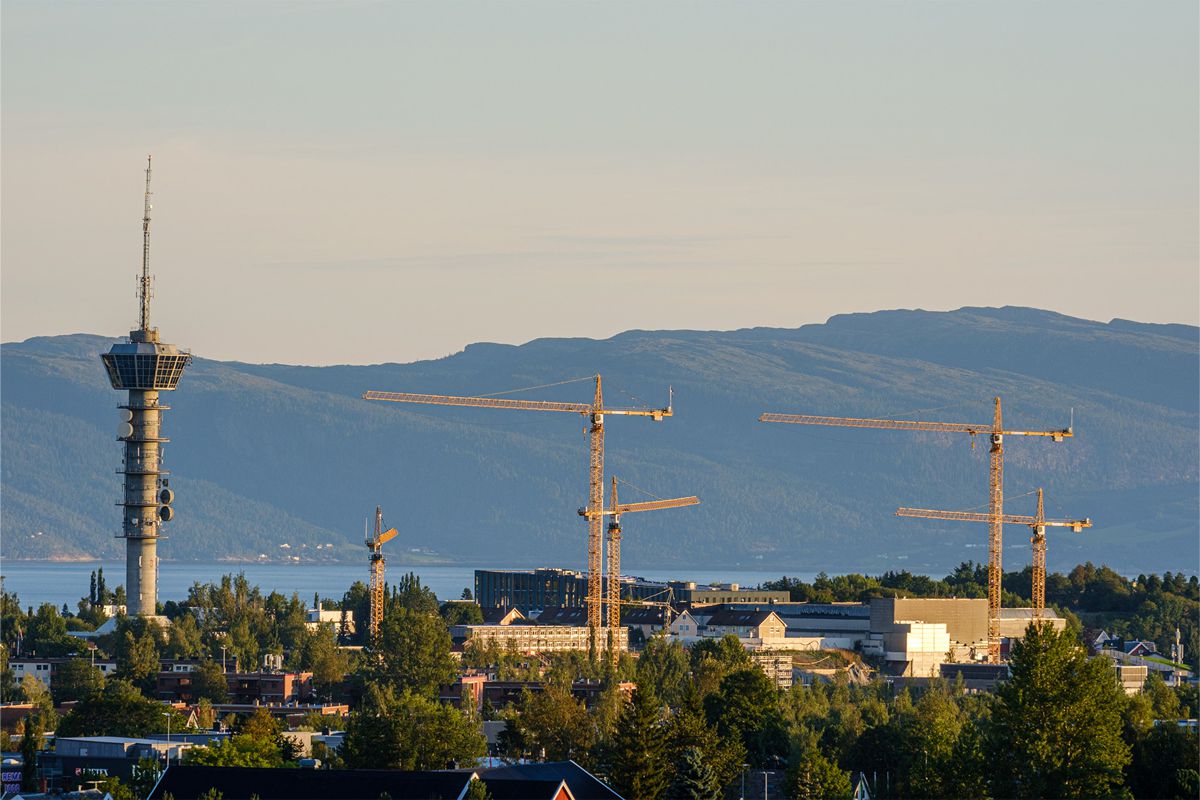The Rise of Smart Materials in Infrastructure
Concrete has always been the stoic backbone of infrastructure, but new “self-sensing” mixes are giving it a voice. Imagine bridge pillars and pavements that themselves detect stress, cracks or moisture change, without external sensors. Engineers are achieving this by mixing in conductive components (like carbon fibres or nanotubes) or by designing novel internal structures so the concrete’s electrical properties change under strain.
These smart concretes essentially turn the whole structure into a sensor, relaying health data in real time. As Dr. Amir Alavi of University of Pittsburgh explains, there is a push for “a new generation of concrete materials that are more economical and sustainable, yet offer advanced functionalities” beyond what ancient Roman concrete could dream of.
Laboratories and pilot projects worldwide are proving the concept. Alavi’s team, for example, has created a metamaterial concrete with an internal lattice that’s super-compressible and energy-generating. When this concrete is compressed (say by a heavy truck), it not only bears the load but also produces an electrical signal. The signal is strong enough to power small electronics like sensors, and it doubles as a damage detector, any stress-induced change in the pattern alerts engineers to internal cracking. The material, composed of a conductive cement matrix embedded with auxetic (counter-intuitively expanding) polymer structures, can compress by 15% repeatedly without failing.
Crucially, the electricity it self-generates can feed embedded monitoring chips. “The electrical signals self-generated by the metamaterial concrete under mechanical excitations can be used to monitor damage inside the concrete structure,” notes Alavi’s study. In partnership with state authorities, his team is now working to implement this tech on Pennsylvania highways, hinting that future roads could carry their own nervous system.
Elsewhere, researchers are enhancing traditional concrete with conductive fillers to achieve similar self-awareness. In China and Italy, experimental highway pavement sections incorporate carbon-based additives that let engineers track strain via electrical resistance changes. Even airport runways have seen tests of self-sensing concrete, using electrical impedance tomography to map stress distribution and detect crack formation in real time. The appeal is clear: structures that can continuously check their own vitals promise earlier detection of problems and fewer catastrophic failures. As a review in Materials noted, such cement mixes remove the need for large numbers of attached gauges, the material is the sensor.
From bridges in Germany with built-in strain detection to high-rises in Singapore using smart cement, self-sensing concrete is ushering in infrastructure that watches itself like a living organism. It’s a shift from inert to intelligent, potentially saving money and lives through proactive maintenance.
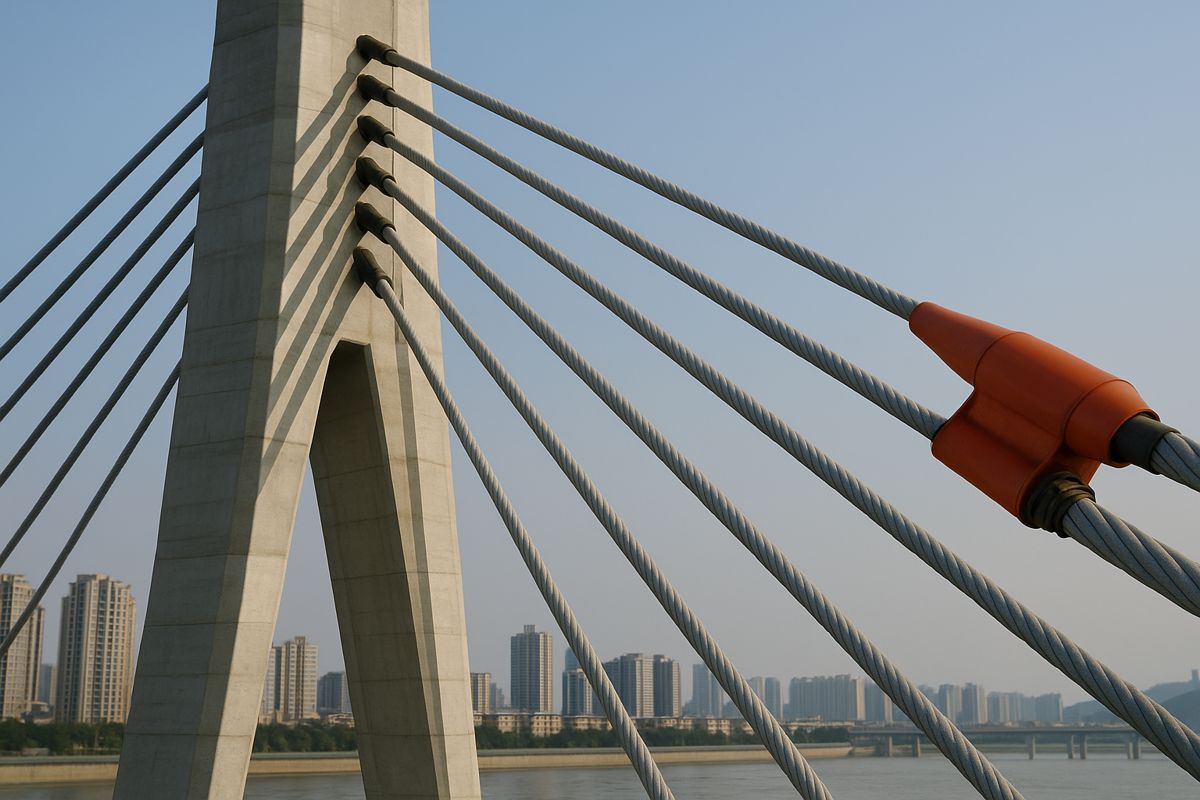
Earthquake-Resilient Metals with Memory
In earthquake engineering labs, a metallic bar is bent dramatically out of shape, and then, like magic, it springs back unbent when heated. This is the promise of shape-memory alloys (SMAs): metals (often a nickel-titanium mix, or newer iron-based blends) that “remember” their original form. After a major shock or stress, they can return to preset shapes, exerting force as they do. Civil engineers have seized on this trick for making bridges and buildings more resilient. “The technology, using shape memory alloy materials of Nickel Titanium and custom composite concrete, allows the bridge columns to bend in an earthquake and then return to their original position,” explains Dr. Saiid Saiidi, a veteran earthquake engineering professor.
In Seattle, Saiidi’s team implemented this on a real overpass: the SR-99 off-ramp bridge became the world’s first to be built with SMA-reinforced columns. To drivers, it looks like an ordinary concrete bridge. But hiding in its critical joints are special NiTi metal bars that stretch under seismic forces and snap back, pulling the structure upright again. “The SR-99 Off-Ramp bridge looks ordinary. What made it stand out is the SMA…and another innovative concrete that we used in the bridge,” Saiidi notes of this ASCE award-winning project. The goal is not just preventing collapse, but allowing immediate use of the bridge after quakes, a game-changer for disaster response.
Beyond the Seattle pilot, shape-memory metals are being trailed across the globe. Japan has tested SMA dampers in high-rise buildings to absorb shock and self-centre floors after tremors. Italy and China’s researchers are exploring SMA restrainer cables and braces for bridges, finding they can cut residual displacements by 25-50% compared to conventional steel rodsonlinepubs.trb.org. Meanwhile, European engineers have developed an iron-based SMA, dubbed “memory steel,” that could revolutionize the retrofit of ageing concrete structures.
This iron alloy, when heated (e.g. via electrical current), will contract and permanently prestress the concrete member it’s attached to. By simply warming the metal once after installation, you achieve reinforcement that traditionally demands bulky hydraulic jacks and anchors. As Volvo Construction Equipment highlighted, memory steel “could be a gamechanger for infrastructure,” especially for strengthening cramped existing bridges where stretching long steel tendons is impractical. Already, Swiss construction firms have started using strips of memory steel to shore up old slabs, cutting down retrofit time and equipment needs.
The appeal of SMAs lies in their dual nature: strong like steel yet nimble like muscle. They can absorb energy through either superelasticity (springing back from large deformations at normal temperatures) or shape-memory effect (returning to shape when heated). Real-world trials show bridges with SMA rebars suffer far less damage in simulated quakes, and crucially, end up plumb afterwards. With massive urban infrastructure investments on the horizon, using “metal with a memory” could ensure new construction is not only safe during a seismic event but operational immediately after.
As one NSF report put it, SMAs “are unique in their ability to endure heavy strain and still return to their original state”, a quality highly sought for resilient design. Challenges remain, like the higher cost of exotic alloys and verifying long-term performance, but the progress is encouraging. From California’s bridges to Japan’s high-rises, shape-memory materials are poised to become the secret spine of next-gen earthquake-resistant infrastructure, giving structures an almost biological ability to heal and re-centre themselves when nature strikes.

Buildings that Regulate Their Own Temperature
Our buildings might soon have the equivalent of thermal batteries embedded in their walls. Phase-change materials (PCMs) are substances that store and release large amounts of heat as they melt or solidify, effectively smoothing out temperature swings. For example, a wax-based PCM might melt at 24 °C, absorbing excess warmth in a sunny afternoon, then solidify as temperatures drop at night, releasing heat to keep interiors comfortable.
By “shifting” heat in this way, PCMs act as a passive climate control, reducing reliance on air conditioning or heaters. These materials are often incorporated into building elements like drywall panels, ceiling tiles, or facades. When the room gets hot, the PCM melts and sucks up energy (preventing a spike in temperature), and when it cools, the PCM hardens and gives that energy back as warmth. In effect, the building can self-regulate its interior climate, much like old stone castles that stayed cool in summer and warm in winter, but with much lighter materials.
Real-world trials demonstrate impressive gains in energy efficiency. In Bucharest, Romania, an experimental house called the EFdeN project tested bio-based PCMs in its walls during extreme seasons. The outcome was a 48% reduction in cooling energy needed in summer and an 11% cut in heating in winter. The PCM used, a soybean-derived fatty acid compound, had a high latent heat capacity (574 Wh/m²) and repeatedly melted and solidified each day to buffer the indoor temperature. Such results validate years of lab research: A government field study in Minnesota similarly found that retrofitting PCM into existing building envelopes could shave several degrees off peak indoor temps on hot days, translating to meaningful A/C savings.
Likewise, in India’s steamy climate, trials with PCM tiles in naturally ventilated rooms showed the material effectively kept interiors near a pleasant 24 °C threshold even as outside heat soared. “These advanced PCMs can intelligently maintain pleasant temperatures in summers without an active cooling system,” notes a Cooling India report on the technology. By adding thermal mass without adding weight, a mere 10 mm layer of modern PCM can store as much heat as a 240 mm concrete wall, a compelling figure for architects seeking energy efficiency in slim designs.
Researchers and companies are racing to commercialize various PCM solutions. Some, like Germany’s BASF (with its Micronal® PCM), encapsulate waxy materials into tiny beads that can be mixed into plaster or concrete. Others, like DuPont’s Energain® panels in the UK, use a copolymer-wax core sealed in aluminium, which can be inserted like drywall to impart thermal storage capacity. These products are engineered to melt and freeze at room-comfort temperatures (around 20-26 °C), making them practical for office and residential buildings. There are even bio-based PCMs derived from plant oils and fatty acids, which are renewable and non-toxic. One challenge, however, is ensuring long-term stability: some inorganic salt hydrates can “supercool” and not solidify when expected, and repeated cycles can fatigue certain materials. Yet standards are emerging (such as the RAL Quality Mark in Europe) to certify PCM products for safety, reliability and performance.
From a sustainability perspective, PCMs offer a twofold benefit: they cut energy use and can be made from green sources. Imagine developing countries leapfrogging directly to “air-con-less” building designs where walls infused with coconut or palm-oil PCMs keep families comfortable and electricity bills low. It’s already starting, model eco-homes in China and the Middle East are experimenting with PCM-enhanced walls to counteract scorching outdoor heat passively.
In Europe, luxury apartments and even a few airport terminals have discretely slipped PCMs under floors or in ceilings to even out thermal loads. As Kyle Mason wrote for the construction industry, PCMs “have the ability to maintain internal temperatures at whichever temperature is desired…without the use of gas or fuel”, essentially storing free heat or cold from the environment. The promise is buildings that automatically soak up excess heat and later return it when needed, much like a rechargeable thermal battery. As climate control takes a whopping share of global energy, such smart materials could be pivotal in designing infrastructure that’s both comfortable and low-carbon by default.

Photovoltaic Pavements and Piezoelectric Highways
Roads have always consumed energy, from the fuel cars burn on them to the electricity for streetlights, but tomorrow’s roads might pay some of that back by generating power on their own. One approach is to build photovoltaics into the road surface, turning sunlit highways into long, horizontal solar farms. Another is to embed piezoelectric materials under the asphalt, so that the mechanical stress of each passing vehicle is converted into electrical current.
These ideas sounded futuristic a decade ago, but today multiple pilot projects have literally set them in concrete. “Imagine if the very structure of a building or road could generate its own electricity? That future may be closer than you think,” teased a recent industry article, reporting on a breakthrough cement-based composite. In China, Professor Zhou Yang’s team developed a cement-hydrogel pavement that acts like a thermoelectric generator: it produces electricity from temperature differences and even stores it in its layered structure. Their bio-inspired cement can power LEDs or wireless sensors from heat alone, hinting at a future where your driveway might charge your gadgets.
Solar road panels have garnered significant global attention. In France, construction firm Colas built what it dubbed the “world’s first solar road”, a 1 km stretch of Wattway solar panels glued onto existing pavement in Normandy. The 2016 pilot cost around €5 million and was meant to produce about 280 MWh per year to feed the grid. While innovative, the project underscored challenges: after a few years, wear and weather damage led the French government to scale back expansion plans. Still, lessons learned have spurred improved designs. A smaller Wattway trial in Georgia, USA, saw a 50 m solarized section on an interstate ramp, performing better thanks to refinements and a kinder climate.
Meanwhile, the Netherlands famously tested a solar bike path called SolaRoad near Amsterdam. It was essentially a cycle lane made of thick glass-covered solar panels. In its first year, the 70 m pilot generated 9,800 kWh, “enough to power three houses” the Dutch authorities reported. This exceeded expectations (roughly 70 kWh per square metre per year), proving the concept workable. However, scaling up to roads that can take heavy traffic introduced new headaches: early attempts at solar roadways in both the Netherlands and the U.S. faced issues with delamination, traction, and cost (solar panels work best angled toward the sun, not flat on the ground under trucks).
By 2020, the consensus was that while solar paving isn’t ready to replace rooftop or field solar arrays, it can be useful in niche applications, like powering streetlights or signs in remote areas, or specialized short stretches where land is at a premium. Researchers in China are still bullish: a 1 km solar expressway test in Shandong has been operational since 2017, and in 2022 they expanded it with a 68 MW roadside solar installation producing 68 GWh/year for local communities.
If solar roads harvest sunlight, piezoelectric roads harvest motion. In Israel, the start-up Innowattech famously laid piezoelectric strips under a busy highway and demonstrated they could generate electricity from the pressure of passing cars. “We can produce electricity anywhere there is a busy road using energy that normally goes to waste,” said Uri Amit, Innowattech’s chairman, as they prepared a pilot on a 30 m strip outside Tel Aviv. The concept is straightforward: certain materials emit a tiny electric charge when squeezed, so embed enough of them under the asphalt and the weight of vehicles becomes a continuous source of power. The Israeli tests suggested a one-kilometer dual-lane stretch could yield up to 100 kW under heavy traffic, enough to run the highway’s lights or a rest stop.
Similar experiments have popped up elsewhere. In Italy, an ambitious trial in 2011 placed piezo crystals beneath a segment of the Venice-Trieste autostrada. And in the UK, Lancaster University’s engineering team recently began a one-mile test, aiming to recover 1-2 MW per kilometer from typical traffic flows. Their project will store the energy in roadside batteries to power things like street lamps and EV chargers. “The biggest challenges are cost, durability, and compatibility with materials like asphalt,” project lead Prof. Mohamed Saafi told Tech Briefs, noting the road must remain just as safe and smooth for drivers. On the other side of the Atlantic, California’s Energy Commission funded trials in 2017 at UC Merced and in San Jose, installing piezo sensors on stretches of pavement. “We want to determine whether or not it’s a realistic project or…just a science project,” said Mike Gravely of the CEC, highlighting the importance of proving cost-effectiveness at scale. These trials are ongoing, but they illustrate a global eagerness to let roads double as power plants.
Even aside from solar and piezoelectric schemes, innovators are finding other ways for infrastructure to generate juice. The thermoelectric cement from Southeast University, for instance, exploits temperature gradients between the pavement surface and the ground to produce power. In Nigeria and Ghana, engineers are toying with embedding small wind turbines in road medians to capture the breeze from speeding vehicles.
Researchers in the UK have proposed kinetic footpaths in cities using panels that flex under footsteps (like those by Pavegen) to run nearby street lights. Not every idea will pan out, some early solar road projects fizzled due to high costs and maintenance woes. But each trial provides valuable lessons. As Romain Le Boulc’h, a project manager for Colas, observed, smart roads are ultimately about sustainability: “providing an innovative solution to produce renewable energy” while using the road space we already have. With EVs proliferating, one particularly exciting horizon is roads that charge cars as they drive (through inductive coils under the pavement). That technology is being piloted in Israel, Italy and Indiana (USA) using short segments to test wireless power transfer to bus and car batteries. It’s early days, but the vision of electrified highways that not only generate power but beam it to vehicles on-the-go could redefine the role of infrastructure in the energy ecosystem. Today’s experiments in photovoltaic and piezoelectric roads are the baby steps toward that brave new road.
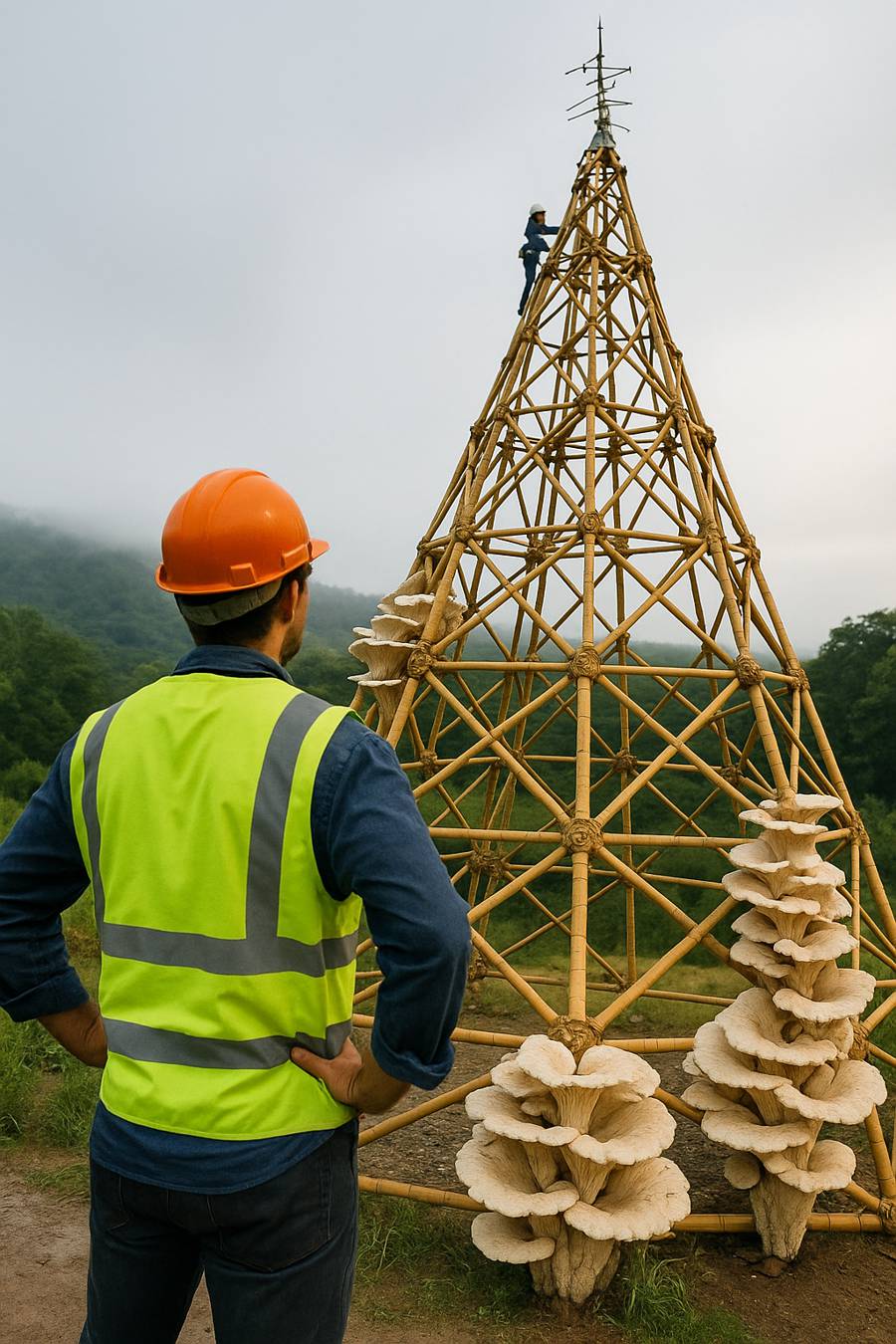
Bio-Based and Biodegradable Composites
Not all smart materials are high-tech alloys or synthetic chemicals, some are quite literally alive or inspired by nature. Around the world, engineers and architects are exploring bio-based composites that can adapt, self-repair, or harmlessly biodegrade when their job is done. One shining example is mycelium materials, derived from the root network of fungi. Mycelium can bind together agricultural waste (like sawdust or straw) into lightweight bricks, insulation boards, or even structural shapes, all while growing in a mould. The result is a material that’s completely natural, compostable, and surprisingly strong. In 2014, New York architects demonstrated this by growing the 40-foot-tall “Hy-Fi” tower using mycelium bricks, proving that fungus-based construction is more than a sci-fi idea.
Today, labs in Europe are taking it a step further. At Newcastle University in the UK, scientists developed a new composite called “Mycocrete”, which combines mycelium with knitted textile moulds. They inject a paste of fungal culture and nutrients into a flexible 3D-knit formwork, let it grow to solidify, then dry it out, yielding sturdy columns and shells of bio-composite. “Our ambition is to transform the look, feel and wellbeing of architectural spaces using mycelium in combination with biobased materials such as wool, sawdust and cellulose,” says Dr. Jane Scott, the project’s lead designer. The team managed to grow a freestanding 1.8 m high dome (“BioKnit”) with this method, and found it actually outperformed conventionally molded mycelium composites in strength tests. The knitted mold allowed better oxygen flow and uniform growth, resulting in less shrinkage and cracking. “The mechanical performance of the mycocrete…is a significant result, and a step towards the use of mycelium and textile biohybrids within construction,” Dr. Scott notes, highlighting that this approach could be tailored for different building needs. In simpler terms, it’s now possible to grow parts of buildings in custom shapes, think organic columns, curved wall panels or acoustic insulation, with minimal waste and carbon footprint.
Beyond fungi, other bio-derived materials are making inroads in infrastructure. Consider the problem of plastic waste, now imagine turning potato peelings or sugarcane fibre into building blocks. A London-based start-up is doing exactly that with “Chip[s] Board”, an eco-friendly chipboard made entirely from discarded potato skins and fibres. It’s like plywood, but biodegradable and sourced from waste instead of trees. In Switzerland, researchers created memory polymers from plant oils that act a bit like SMAs, when embedded in concrete, these polymers can contract upon heating and seal up cracks (a form of self-healing). Such shape-memory polymers offer a non-metallic way to give materials a responsive, damage-mitigating function.
Meanwhile, the quest for sustainable insulation has revived interest in some decidedly low-tech “smart” materials: straw bale construction, for example, has seen a comeback for its breathing walls and hygroscopic (moisture-buffering) abilities, essentially a natural humidity regulator. And wood itself, in the form of cross-laminated timber (CLT), is now lauded as a smart structural material since it locks away carbon and can be prefabricated with precision to include service channels, sensors, and more. CLT high-rises from Norway to Vancouver attest that tomorrow’s skylines might be as much plant-based as steel-based.
Perhaps the most exciting bio-inspired trend is materials that enhance environmental quality as they perform. Mycelium composites, for instance, are not only insulating and fire-resistant, but also air-purifying, fungi naturally absorb CO₂ and some pollutants as they grow. Some mycelium-based insulation panels have been shown to sequester carbon from the atmosphere even after installation, effectively making the building a living cleaner. “Not only is this material completely natural and biodegradable, but it massively reduces a building’s embodied and operational carbon footprint,” a Volvo CE report highlighted about mushroom insulation. The material is naturally self-extinguishing (resistant to catching fire) and even gets stronger over time as it dries and ages.
In the realm of polymers, scientists are devising bioplastics that change properties with environmental conditions, for example, a façade coating that becomes more porous when humidity is high (to let a building “sweat” out moisture) and then tightens up when dry. In the Netherlands, one experiment uses pine cone extract in paint so that it opens micro-pores in damp air and closes them in dry air, mimicking how pine cones react to humidity. And then there’s the fascinating work with bacterial concretes: embedding spores of special bacteria in concrete that remain dormant until a crack lets in water, upon which they awaken and produce limestone to seal the crack. This is bio-based self-healing in action, and field trials (such as on a lifeguard station in Wales, UK) have already shown cracks sealing autogenously within weeks of appearing.
The big advantage of bio-based smart materials is their alignment with circular economy principles. Many can be grown rapidly, using waste as feedstock, and at end-of-life they compost or dissolve without harming the planet. For infrastructure in the Global South, this could be revolutionary, imagine disaster relief shelters grown from mushroom mycelium and local farm waste, or roads reinforced with mats of bamboo (a fast-growing grass) that naturally senses and responds to stress.
In fact, a pilot in Indonesia is testing bamboo composite bridge decks treated with enzymes that cause the bamboo to stiffen in response to vibration, acting as a passive damper. And in India’s Meghalaya region, villagers have long made “living bridges” by training tree roots across rivers, a traditional inspiration for modern architects looking at self-growing structures. While such examples straddle the line between vernacular wisdom and high-tech innovation, the ethos is shared: leverage nature’s intelligence and regenerative cycles in the very bones of our buildings. The result might be cities that look more like living forests of materials, breathable, adaptive, and compostable, rather than inert concrete jungles.

Materials Meet the Internet of Things
The “smart” in smart materials truly comes to life when paired with sensors, networks and artificial intelligence. The latest infrastructure projects are embedding digital connectivity right into materials, creating IoT-connected roads, bridges and tunnels that can communicate their status continuously. For instance, many modern bridges now come with hundreds of fibre-optic strain gauges and MEMS accelerometers glued or cast into the concrete at construction. These microscopic devices measure vibration, tilt, stress, you name it, and feed data to cloud platforms that AI algorithms analyse for anomalies.
In France, the city of Lyon deployed an advanced sensor network on its roadways to aid winter maintenance. Embedded sensors at nine locations measure road surface temperature, humidity, dew point and even detect the formation of black ice. The data streams in real time via a wireless mesh to a central dashboard. “The system provided by HIKOB helps us to gather more accurate measurements…and to better understand the local situations,” says Isabelle Fontany, an innovation engineer with Grand Lyon, noting that pinpoint, real-time data has improved the efficiency of de-icing operations.
Bridges especially have embraced “digital twin” concepts, creating a live digital model that mirrors the physical structure. The 55-km Hong Kong-Zhuhai-Macau Bridge, for example, has over sensors baked into its decks and piers, all feeding a central AI-powered health monitoring system (citation). Similarly, the new Genova San Giorgio bridge in Italy (rebuilt after the Morandi collapse) was outfitted from day one with a dense array of IoT sensors to continuously check cable tensions, corrosion, and vibrations, with AI algorithms learning the bridge’s normal patterns.
In the USA, the I-35W Mississippi River bridge in Minnesota was an early adopter: opened in 2008, it contained over 500 sensors reporting on strain and joint movement. These systems are already proving their worth. Engineers in South Korea recount how an AI monitoring platform on Seoul’s smart highway detected subtle sagging in a few beams, prompting preventive strengthening long before any visible issue occurred (citation). As one highway agency executive put it, “In some countries, critical long-span bridges come with hundreds of sensors embedded during construction for lifetime monitoring”, it’s becoming the new norm.
It’s not just structures, smart pavements are emerging too. In Colorado, a start-up called Integrated Roadways has tested precast concrete road panels embedded with fibre-optics and electronics to create “sensor-rich” highways. These slabs can detect vehicle presence, weigh them in motion, and even provide Wi-Fi and 5G connectivity along the roadside. “Once the technology is refined…and data [is] reliably back to owners, this is very useful,” says Andrew Garton of WSP, whose team participated in the Colorado pilots.
In one demonstration on a stretch of US 285, the smart pavement accurately tracked cars and trucks and transmitted traffic data in real-time to state traffic management centres. Although early tests hit snags (rural pilot sites lacked good internet backhaul and power supply), the concept has attracted partnerships with tech firms like Cisco and interest from transportation departments. The road itself essentially becomes a distributed sensor network, capable of alerting authorities to accidents (by sensing sudden stops or impacts), enabling “connected car” features, and one day maybe even charging electric vehicles as they drive via inductive coils (Integrated Roadways’ panels have expansion ports ready for future wireless charging tech).
AI and machine learning come into play by digesting the massive influx of data these smart materials provide. A single smart bridge can generate terabytes of data a year. AI algorithms sift through it to detect anomalies, a slight change in vibration frequency might indicate a crack forming, or unusual stress patterns might warn of foundation settlement. Modern infrastructure dashboards use predictive analytics to forecast when maintenance should be done, transitioning from scheduled upkeep to condition-based maintenance. As HNTB’s Katie Zehnder observes, we’re seeing technologies for “self-healing pavements to digital twin models to pavements responsive to floods…They’ll be able to do what we are not even thinking about right now”.
One vivid example comes from India: on the hazardous Jammu-Srinagar mountain highway, a system called “Roads That Honk” was installed at deadly blind curves. Smart poles with radar sensors detect oncoming vehicles and literally emit a honking alert to prevent collisions, all powered by solar panels since the area is remote. The local police report that since this IoT warning system went up in 2017, accidents on those curves have dropped significantly. “We are glad to have been behind an innovation that harnesses technology…to alert drivers. We are confident Roads That Honk will significantly reduce accidents and save lives,” said Rajdeepak Das of Leo Burnett, the creative agency involved. It’s a powerful example of blending smart material installations (in this case, solar-powered smart poles) with immediate safety outcomes.
The integration of sensors also enables infrastructure to interact with its environment in new ways. Consider smart tunnels that “feel” the airflow and auto-adjust ventilation fans, or sensor-laden retaining walls that report soil pressures (potentially detecting landslide risks early). In the Netherlands, an innovative dike is being built with embedded moisture sensors throughout its length; if water starts seeping in, the dike effectively sends an SOS before any breach.
All these data points feed into city-wide digital twins, virtual replicas of cities and networks, giving planners and AI systems an omniscient view of infrastructure health. Dr. K. Mallela, a transportation researcher, notes possibilities like “embedded striping to inform vehicles in low visibility, lighted pavements, [and] an integrated vehicle-highway system” where the road and car continuously exchange information. “You will have a pavement connected with vehicles; [in] an integrated vehicle-highway system,” he predicts, emphasizing that the line between infrastructure and vehicle will blur. Indeed, highway designers are already considering dedicated lanes with special sensor-laden pavement for autonomous cars, allowing precise lane positioning and hazard warnings broadcast directly from the road.
What does this all mean for the people managing infrastructure? It’s a paradigm shift. A bridge engineer 20 years ago relied on periodic inspections, today, they might get text alerts from the bridge itself. Maintenance crews can be dispatched exactly where needed, guided by live data (some highways now use drones and fixed cameras alongside embedded sensors, all feeding AI that pinpoints potholes or fallen debris in real time).
This connectivity of materials also opens the door for community benefits: smart streetlights that brighten or dim based on usage, or pavements that count pedestrians to aid urban planning. Crucially, these systems must be cyber-secure, a concern now that infrastructure is part of the Internet. But agencies appear to be embracing the trade-offs. Tim Sylvester of Integrated Roadways remarked on how attitudes have flipped: “In the early days we’d talk to public agencies about digital infrastructure and they’d chuckle…Now we sit down with them and they say, ‘We need it yesterday, how soon can we get it installed?’”. The demand for smarter, more resilient roads and bridges is clearly here.
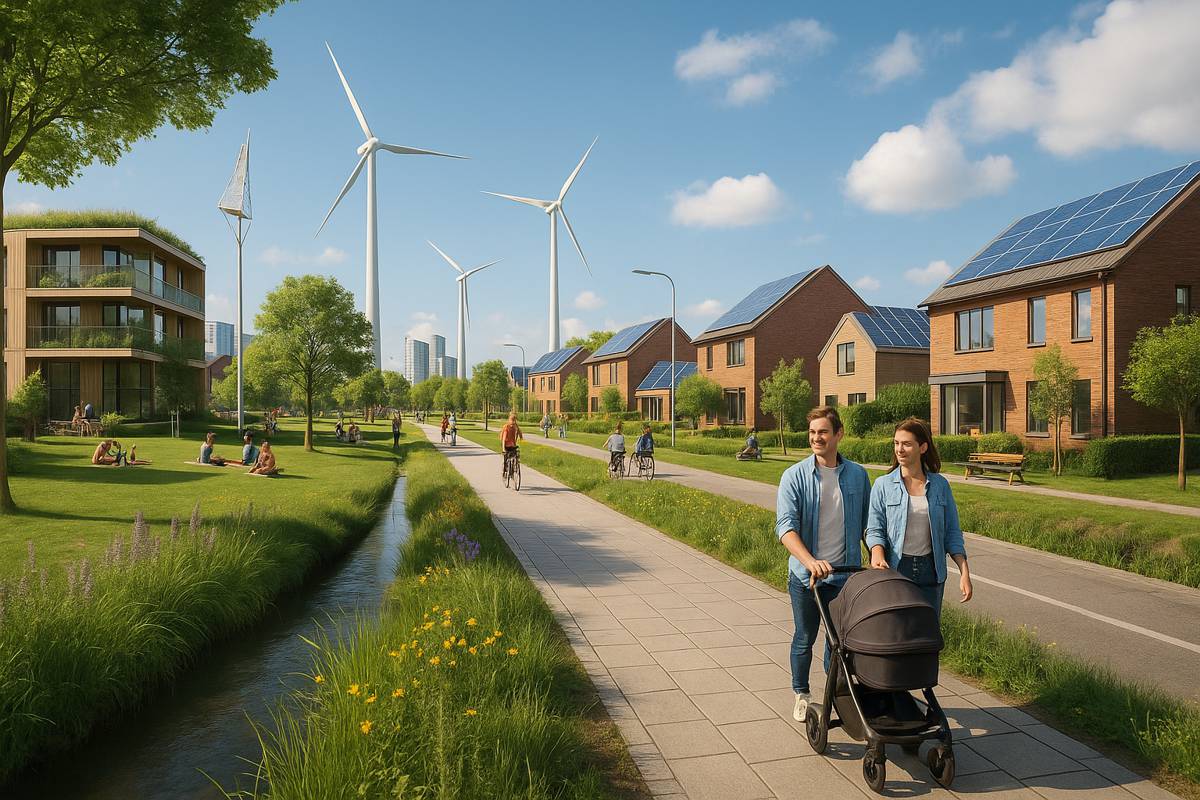
Towards Intelligent and Sustainable Infrastructure
From self-healing bridges to power-generating roads, the fusion of material science with digital tech is redefining what our infrastructure can do. The benefits are manifold, durability, safety, sustainability, but integrating these advances at scale will require investment and enlightened policies. Encouragingly, we see leadership and innovation on every continent. In Asia, countries like Japan, China and India are leveraging smart materials both to modernize aging infrastructure and leapfrog into resilience against climate and seismic risks.
In Europe, sustainability drives the agenda: the EU’s Horizon programs fund projects in self-sensing and self-healing materials as part of a push for a more sustainable, circular construction industry. North America, for its part, is piloting numerous smart road technologies, often through state-level initiatives, with an eye on improving mobility and integrating electric vehicles. Even the Global South is joining the wave, sometimes out of necessity: African and South American engineers are experimenting with locally-sourced bio-materials and IoT kits to tackle infrastructure gaps where conventional solutions are too expensive or slow. A Rwandan start-up, for example, is developing mycelium-based bricks to build affordable homes, embedding simple sensors that report on structural integrity via cellular networks (citation). It’s “appropriate tech” meets high-tech.
There is also growing collaboration across sectors. Construction giants are partnering with tech firms and universities, blending know-how in materials, data, and artificial intelligence. The vision is clearly one of convergence, infrastructure that is not just concrete and steel, but a synergy of physical and digital, passive and active. As Ron Williams of Jacobs observed, we’re at “a pinnacle point” in the evolution of smart roads. The same could be said for all infrastructure.
We stand on the cusp of roads and rails, tunnels and towers that sense, react and even think in real time. Maintenance might shift from fixing things after they break to structures that adjust and mend themselves continuously. Energy infrastructure might become decentralized, with every bridge or highway a small power station feeding the grid or charging vehicles. And the materials themselves, whether grown from mushrooms or forged in labs, will be far greener, making infrastructure part of the climate solution rather than a big emitter.
For the construction professionals, investors, and policy makers reading, the implications are profound. Projects may have higher upfront costs (smart materials and sensors aren’t cheap yet), but life-cycle benefits and resilience payoffs can be enormous. It calls for updated building codes and design standards, many of which were written when concrete was “dumb” and steel only elastic in one direction. Now standards must account for materials that defy old assumptions (imagine designing a bridge pier that can recentre itself, that’s a different calculus for safety factors). Workforce training is another aspect: tomorrow’s maintenance crews might need as much IT and data analysis skills as welding and paving skills. Governments will also need to ensure interoperability and cybersecurity as infrastructure goes online.
Yet, the trajectory is set and the momentum is accelerating. Smart materials in infrastructure are moving from novelty to necessity. They offer a path to more resilient cities that can withstand natural disasters, to transportation networks that power themselves cleanly, and to buildings that nurture their occupants while treading lightly on the earth. One can envision a future city street: beneath a surface of solar-harvesting, self-illuminating smart pavement runs a web of sensors guiding driverless cars; the buildings lining it dynamically adjust their facades to the sun, with algae-filled panels that scrub the air; a nearby bridge flexes its shape-memory tendons as a minor quake tremor passes, remaining undamaged; and the entire scene is monitored by an AI “city brain” optimizing energy and maintenance flows. This is not science fiction, it’s the logical culmination of the trends already in motion, from Eindhoven to Singapore.
As infrastructure stakeholders, embracing these technologies will be crucial. The coming decades demand we rebuild and expand infrastructure to serve billions more people under the strains of urbanization and climate change. Doing so with yesterday’s materials would be a wasted opportunity, or worse, a recipe for short-lived, unsustainable systems. Instead, by building with intelligence, literally embedding intelligence into our building blocks, we can create infrastructure that is not only stronger and longer-lasting but also more attuned to our planet and our needs. Or as one senior engineer put it about smart roads: “Where we are today is a pinnacle point”, from here on, each bridge or road we build can be a little smarter than the last.
The rise of smart materials in infrastructure is not just an industry trend; it’s part of a broader transformation towards an adaptive, responsive built environment that learns and improves over time. It’s an exciting time to be in construction and engineering, the very definition of what constitutes infrastructure is expanding, and with it, the possibilities to improve quality of life for communities around the world.
In this new era, our roads, bridges and buildings will do more than sit there; they will interact, evolve and even think on behalf of the society they serve, truly building with intelligence.
